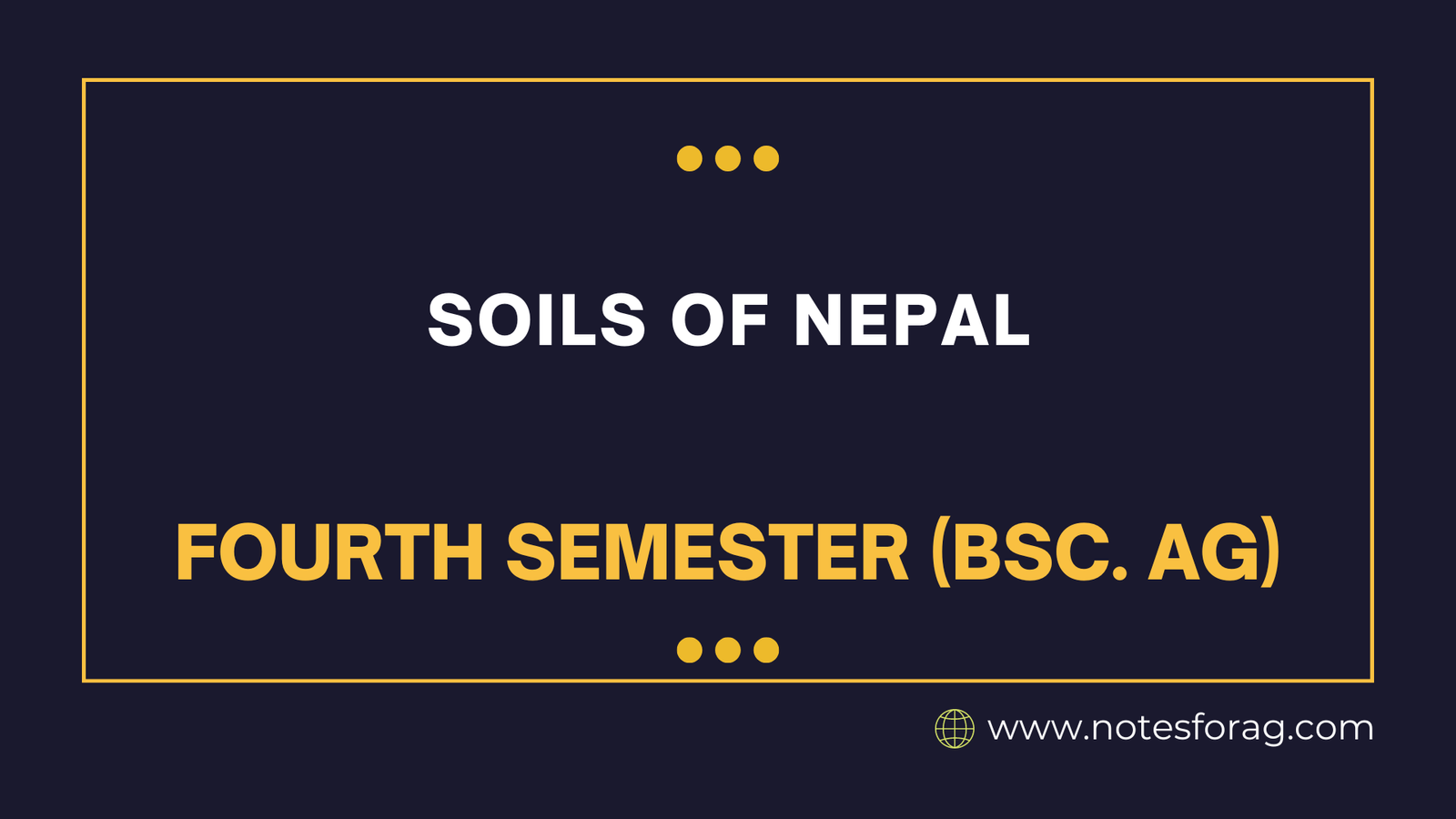Nepal’s diverse geography, characterized by dramatic changes in elevation from the lowlands of the Terai to the high Himalayas, results in a fascinating variety of soils.
Table of Contents
Here’s a breakdown of the major soils of Nepal and their suitability for different uses:
1. Entisols (Young Soils of Nepal)
- Description: Entisols are young soils with minimal development. They are often found on steep slopes or recently deposited materials like riverbeds.

- Suitability: Generally low agricultural potential due to shallow profiles and susceptibility to erosion. However, some entisols in the Terai with proper management can be suitable for certain crops.
2. Inceptisols (Moderately Developed Soils of Nepal)
- Description: Inceptisols are moderately developed soils with some horizon differentiation. They are the most widespread soil order in Nepal, found in the mid-hills and valleys.

- Subtypes:
- Ochrepts (Light-colored Inceptisols): Most common subtype in Nepal, suitable for various crops like maize, wheat, and millet with proper management practices.
- Dystrochrepts: These inceptisols have a bit lower fertility compared to Ochrepts but can still support some agriculture.
- Aquepts: These are poorly drained inceptisols found in valleys and require drainage improvements for cultivation.
3. Mollisols (Dark, Fertile Soils of Nepal)
- Description: Mollisols are known for their dark, rich topsoil layers formed under grass vegetation. They are highly fertile and productive soils.

- Suitability: Ideal for various crops, including wheat, maize, barley, and vegetables. These soils are well-suited for high-value agriculture.
4. Alfisols (Clay-Rich Subsoils of Nepal)
- Description: Alfisols have a very distinct clay-enriched layer in the subsoil. They are found in the mid-hills and valleys of Nepal.

- Suitability: Moderately fertile soils suitable for a variety of crops like maize, wheat, and legumes. However, they can be susceptible to erosion and require proper management practices.
5. Other Soil Types
- Spodosols: These acidic soils with a distinct layer of aluminum and iron oxides are less common in Nepal and have limited agricultural potential.
- Histosols: Organic soils formed in wetlands are not widespread but can be suitable for specific crops like paddy rice with proper drainage management.
Factors Affecting Soil Suitability in Nepal
- Climate: Variation in temperature and rainfall across Nepal’s elevation zones significantly impacts soil formation and suitability.
- Topography: Steep slopes are prone to erosion, limiting agricultural use. Conversely, gentle slopes and valleys often have better soil suitability.
- Drainage: Well-drained soils are ideal for most crops, while poorly drained soils may require drainage improvements or be suitable for specific water-loving crops like rice.
Importance of Soil Management
Given the hilly terrain and variations in soil types, proper soil management practices are crucial in Nepal. Techniques like terracing, cover cropping, and crop rotation can help conserve soil fertility, prevent erosion, and promote sustainable agriculture.
Frequently Asked Questions (FAQs)
How many types of soil are there in Nepal?
In Nepal, there are fourteen different types of soil groups that are governed by physiography and climate. Although the LRMP soil map is helpful in understanding Nepal’s soil characteristics and soil-forming processes, the SOTER soil classifications are better known.
What pH is acidic soil?
An acid soil has a pH value below 7.0. Above pH 7.0 the soil is alkaline.
What pH is rich soil?
A soil’s natural pH depends on the material from which it was formed. Soil pH usually ranges from about 4 (very acidic), when most crops will fail, to about 8 (for soils rich in calcium carbonate or magnesium carbonate).
Related Articles

